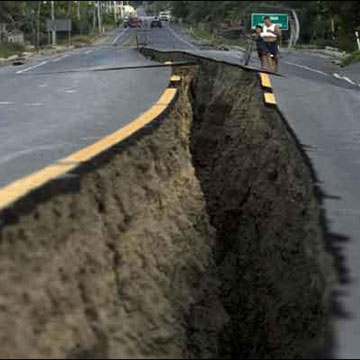 Bengaluru:
Bengaluru: A new study to identify seismically susceptible areas in the Western Himalayas has shown that "almost the entire states of Himachal Pradesh and Uttarakhand and a portion of Jammu and Kashmir" are most at risk.
The study by seismologists at the Indian Institute of Technology-Roorkee and reported in the 'Journal of Earth System Science' says that most of J&K is only moderately susceptible while the Indo-Gangetic plains are least susceptible.
This conclusion, the report says, has been reached using what is called "pattern recognition" or PR technique.
This method relies on features identified and extracted from various available tectonic and seismicity data of the study area which, in this case, is a region of Western Himalayas -- bounded by latitude 29-36 degrees North and longitude 73-80 degrees East -- that has experienced several moderate to large-sized earthquakes, including the great Kangra earthquake of 1905.
According to the authors, different areas in this region exhibit different patterns of seismicity and "is therefore necessary to differentiate between areas which can experience relatively high seismicity compared to other areas".
"This has tremendous implications in assigning design earthquake parameters and in planning and disaster mitigation at the micro level to help in reducing losses in terms of life and infrastructure," says their report.
In order to create the "susceptible area map" using the PR technique, the researchers searched earthquake catalogues from different sources and studied several aspects like chronological continuity, types and magnitude of main shocks, foreshocks and aftershocks starting from the year 1552.
According to the report, the final map thus produced has led to the identification of most susceptible (class A), moderately susceptible (class B) and least susceptible areas in the Western Himalayas.
In Himachal Pradesh, which falls in class A, places at risk are parts of Bilaspur, Chamba, Kangra, Kullu, Lahaul and Spiti, Mandi, Shimla, Solan and Sirmaur.
In Uttarakhand, the other class A state, parts of Almora, Chamoli, Dehradun, Haridwar, Nainital, Pauri Garhwal, Tehri Garhwal and Uttarkashi come under this high-risk area. The map also gives a break-up of earthquake susceptible areas at district levels within the Western Himalayas and the Indo-Gangetic plains.
"This study allowed us to identify and narrow down areas where most recent earthquakes are originating, and also where strong earthquakes may recur," the authors say, adding that their susceptibility map calls for modification of the seismic zoning map of the Bureau of Indian Standards (BIS).
They say that Zone-V in the Western Himalayas in the BIS map needs modification "and it should be considered as a continuous and larger area extending from Jammu and Kashmir, Himachal Pradesh and Uttarakhand".
The findings also imply that Zone-IV "needs to be subdivided into smaller areas".
 Bengaluru: A new study to identify seismically susceptible areas in the Western Himalayas has shown that "almost the entire states of Himachal Pradesh and Uttarakhand and a portion of Jammu and Kashmir" are most at risk.
Bengaluru: A new study to identify seismically susceptible areas in the Western Himalayas has shown that "almost the entire states of Himachal Pradesh and Uttarakhand and a portion of Jammu and Kashmir" are most at risk.